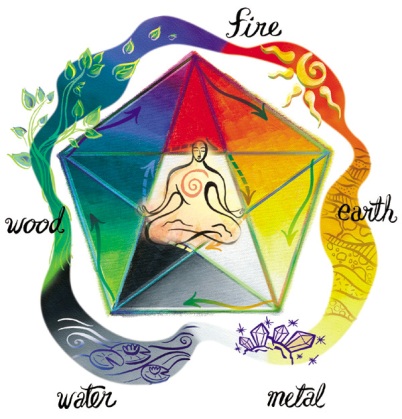Feng shui is the ancient Chinese philosophical system that seeks to create balance and harmony through carefully designed environments. Drawing on these age-old principles, the newly-launched fragrance house The Harmonist offers a debut collection of 10 signature scents, each inspired by one of the five natural feng shui elements. Read on to learn more about what these elements are, what they mean, and how they are used in feng shui arrangement practices.
What are the five feng shui elements?
At the heart of the feng shui system is the energy known as “chi”: the life force of nature that is present in all living things. According to feng shui principles, the five natural elements of wood, fire, earth, metal, and water are the physical expressions of chi.
What meaning is each element associated with?

Each of the five feng shui elements is associated with different meanings, traits, and qualities:
Fire – Thought to be the most powerful of all the feng shui elements, fire symbolizes passion, energy, expansion, and transformation. It’s also associated with the concepts of fame and reputation; in other words, with how you want to be seen in the world.
Wood – The element of wood is associated with the development of creative energies: inspiration, motivation, and passion are all qualities represented by wood. When used in feng shui practice, wood typically embodies personal growth, renewal, new beginnings, and prosperity. The element is also seen as a tool for purifying and redirecting one’s chi.
Water – In feng shui, it is the movement (or stillness) of water that dictates the meaning of the element. Flowing water is directly related to the flow of money and career. It is this quality of a steady flow that helps us let go of aspects of our lives that are no longer necessary. Flowing water is also associated with communication and connection, like a flowing river that links one community with another. Still water, on the other hand, symbolizes one’s personal inner depths, and brings feelings of calm and renewed strength.
Metal – Often considered the “purest” feng shui element, metal is important in that it draws together and unifies all the other elements. Like a transmitter, it “conducts” the various elemental energies to different areas. Associated with mental strength and intellectual abilities, metal is a great help for facilitating focus and clarity of thought.
Earth – Just like the ground beneath our feet, the element of earth is all about permanence, stability, nourishment, and home. The solidity of earth gives a sense of security and support, and promotes feelings of safety and comfort.
How are the elements used in feng shui practice?
The practice of feng shui is all about achieving the balance of all five elements in the space or the environment that surrounds you. When the elements complement each other, the energy of the space is stable and conducive to peace and harmony. And while the elements can be used in their literal, physical forms, this approach is not always practical in indoor spaces like homes or offices.
Fortunately, each of the five feng shui elements can be represented by different things, like shapes, colors, or other physical objects. The elements are associated with different compass directions as well. As a result, where they are placed within a space is just as important as what is used to represent them.
Fire – Not surprisingly, fire is symbolized by the colors of red, orange, and yellow, as well as by triangular shapes. Fire is also associated with summer and with the direction of south. Good lighting, including candles, and living beings are some of the ways you can introduce the element of fire into your space.
Wood – Associated with spring and the growth and renewal it brings, wood is symbolized by rich green colors and by the directions of east and southwest. The most obvious way to use wood in a space is through living plants or trees. However, botanical prints can also be used, as can green textiles and furnishings and wood-based furniture. Wood is also symbolized by rectangular shapes, like vertical stripes or tall, columnar vases.
Water – Wavy lines are the shape used to represent water. Its color is blue, its season is winter, and its direction is north. A water feature, like a fish tank or an outdoor pond or fountain, is a popular way to use the element of water in a space. Alternatively, paintings of water scenes, artwork or sculptures featuring wavy lines, or even crystals are also typical feng shui representations of water.
Metal – As the unifying element, metal is represented by round or circular shapes, as well as by the pure colors of white, silver, gray, and black, the season of fall, and the directions of west and northwest. While metal is one of the easiest elements to use in its direct physical form, it can also be represented by furnishings or architecture like round tables, circular rugs, or arched doorways.
Earth – The stable shape of the square is used to symbolize earth’s grounded steadfastness. The colors associated with this element are brown, beige, and other muted tones. Its season is the end of summer and its directions are the center, the northeast, and the southwest. To bring the earth element indoors, rock features, antique pottery, and old books can all be used.

Sorry, comments are closed for this post.